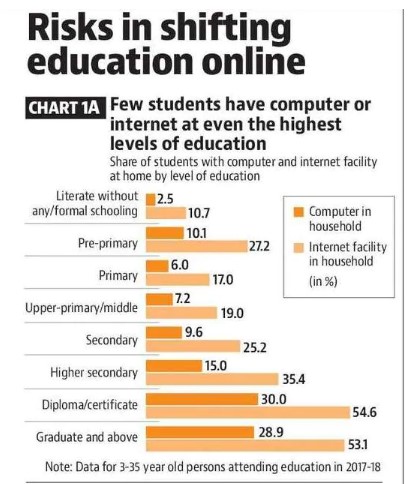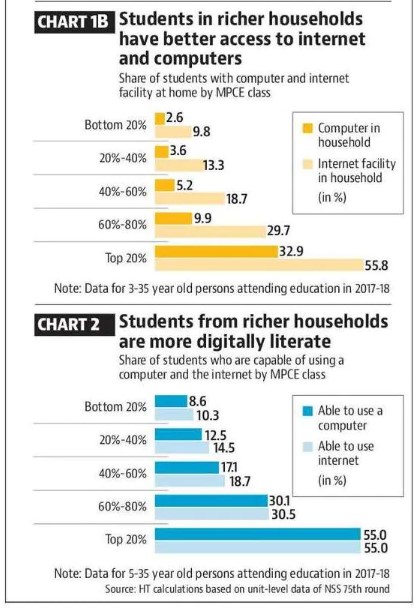Focus: GS-III Social Justice
Introduction
- The Covid-19 pandemic has disrupted the education sector globally as classes have been suspended to enforce social distancing and educational institutions, from schools to universities, have shifted to online methods of teaching and evaluation.
- This has encouraged some sort of a permanent tilt, if not a complete shift, to online education.
- The new National Education Policy (NEP) approved last month also talks about being ready for digital and online education, although it adds a rider that the digital divide must be eliminated to fully benefit from such methods.
Need for careful policy-making
- Any policy that has a sudden push towards online education in India, will run the risk of excluding a significant section of students.
- A number of students, who, in theory, have access to online teaching will have to depend on inconvenient methods such as using mobile phones instead of computers.
- While mobiles can be useful in listening to online lectures, they are not the ideal medium when it comes to writing exams or even assignments.
- Rough estimates suggest pursuing online education can be very costly for the poorest households.
The Gap: Inequality in Online education
- Three-fourths of students in India did not have access to the internet at home, according to a 2017-18 all-India NSO survey.
- The share of those who did not have computers, including devices such as palm-tops and tablets, was much greater ~90%.
- Access to these facilities was higher among students at higher levels of education. But even at the highest levels, a large share of students did not have access to these facilities. As expected, access to the internet and computers is directly related to household incomes.
- Lack of access to the internet and devices has also created a gap in digital literacy.
- As many as 76% of students in India in the 5-35 age group did not know how to use a computer.
- The share of those who did not know how to use the internet was 74.5%. Once again, this gap rises with a fall in income levels.
- 55% of students among the top 20% of households by monthly per capita expenditure (MPCE) knew how to use a computer and internet while these proportions were only 9% and 10% among the bottom 20%.


-Source: Hindustan Times



